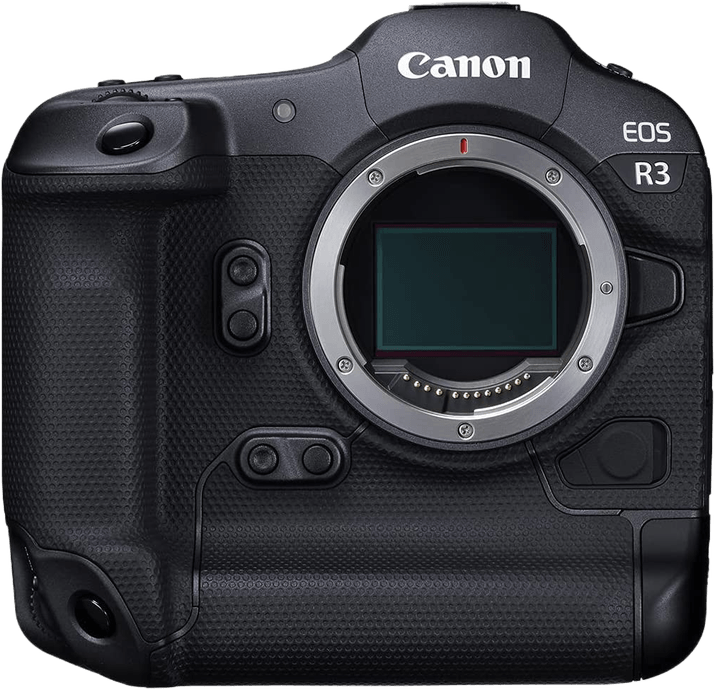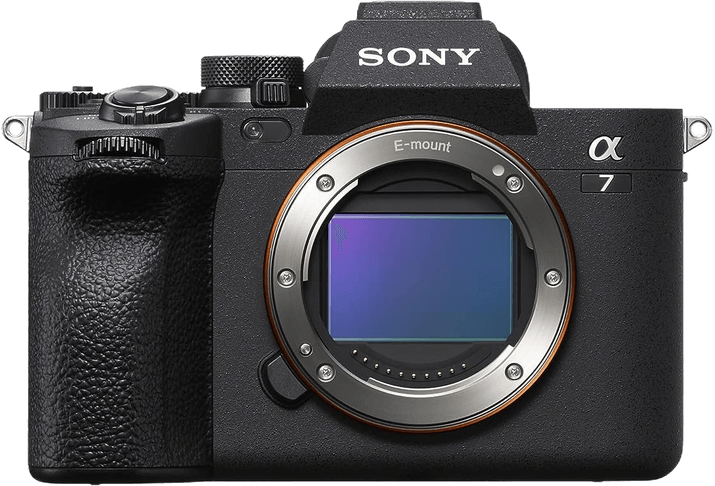Canon EOS R3 vs Sony a7 IV Comparison
Canon EOS R3

Sony a7 IV

The Canon EOS R3 and Sony a7 IV both score 84/100, showcasing their strong performance and capabilities. As mirrorless cameras released in 2021, they share some common specifications, making them powerful contenders in the market.
Both cameras have similar scores, but the Canon EOS R3 stands out with its larger size (150 x 143 x 87mm) and heavier weight (1015g / 2.24lbs), providing a more robust feel. Additionally, the R3 has a higher launch price of $5999, reflecting its premium quality and features.
On the other hand, the Sony a7 IV is more compact (131 x 96 x 80mm) and lighter (659g / 1.45lbs), making it easier to carry and handle. Its lower launch price of $2499 also makes it a more affordable option for budget-conscious photographers.
Considering these factors, the Canon EOS R3 offers a more premium experience, while the Sony a7 IV provides a lightweight, budget-friendly alternative. Both cameras excel in their respective areas, catering to different preferences and needs in the photography world.
Canon EOS R3 vs Sony a7 IV Overview and Optics
The Sony a7 IV narrowly edges out the Canon EOS R3 in optics, with a score of 85/100 compared to the R3’s 84/100. Both cameras share several key specifications, including a CMOS sensor, full-frame sensor size, and in-built image stabilization. They also have similar DXOMARK scores for their sensors, with the a7 IV scoring 97 and the R3 scoring 96.
The Sony a7 IV has a higher megapixel count at 33, compared to the R3’s 24. This gives the a7 IV an advantage in capturing more detail and producing larger prints. Additionally, the a7 IV’s Bionz XR processor is efficient and powerful, ensuring quick image processing and less noise at high ISO settings.
On the other hand, the Canon EOS R3 boasts a significantly faster shooting speed of 30 frames per second (fps), compared to the a7 IV’s 10 fps. This makes the R3 better suited for fast-action photography, such as sports and wildlife. Furthermore, the R3’s Digic X processor is also a high-performance processor, enabling fast autofocus and improved low-light performance.
The Canon RF lens mount on the R3 offers a growing selection of high-quality lenses, while the Sony FE lens mount on the a7 IV has an extensive range of lenses available. Both cameras provide ample choices for photographers, depending on their preferences.
Comparing the optics of these cameras, the Sony a7 IV excels in image detail and low-light performance, while the Canon EOS R3 shines in fast-action photography. Both cameras have excellent lens options, making them suitable for various photography styles. Ultimately, the choice between these two cameras depends on the specific needs and priorities of the photographer.
Canon EOS R3 vs Sony a7 IV Video Performance
The Canon EOS R3 outperforms the Sony a7 IV in video capabilities with a score of 96/100 compared to 91/100. Both cameras have a maximum video frame rate of 120fps and built-in time-lapse functionality. However, the EOS R3 offers superior video quality due to its 6K resolution and larger maximum video dimensions of 6000 x 3164. In contrast, the Sony a7 IV provides 4K resolution and max video dimensions of 3840 x 2160.
The Canon EOS R3’s higher resolution allows for more detailed and sharper videos, making it the better choice for professional videographers and filmmakers. The larger video dimensions also give users more flexibility when editing and cropping footage, resulting in higher quality finished products.
On the other hand, the Sony a7 IV still delivers excellent video quality with its 4K resolution, which is sufficient for most users and purposes. Additionally, the lower resolution may result in smaller file sizes and faster processing times. This can be beneficial for users with limited storage space or those who prioritize speed over maximum video quality.
When comparing the Canon EOS R3 and Sony a7 IV, the EOS R3 clearly offers superior video capabilities due to its higher resolution and larger maximum video dimensions. However, the Sony a7 IV remains a strong contender with its 4K resolution, which is more than adequate for most users. Ultimately, the choice between these two cameras will depend on individual preferences and requirements, with the EOS R3 being the better option for those seeking the highest possible video quality.
Canon EOS R3 vs Sony a7 IV Features and Benefits
The Canon EOS R3 outperforms the Sony a7 IV in features, scoring 87/100 compared to the Sony’s 83/100. Both cameras share several common specifications, such as touchscreen capabilities, flip screens, WIFI, and Bluetooth connectivity. However, the Canon EOS R3 excels in certain aspects, making it the winner in this comparison.
The Canon EOS R3 boasts a larger screen size of 3.2 inches, compared to the Sony a7 IV’s 3-inch screen. Additionally, the Canon EOS R3’s screen resolution is significantly higher at 4,150,000 dots, while the Sony a7 IV has a resolution of 1,040,000 dots. This difference results in a clearer and more detailed image preview on the Canon EOS R3. The Canon EOS R3 also features GPS functionality, which the Sony a7 IV lacks. This makes it easier for photographers to geotag their images and track shooting locations.
On the other hand, the Sony a7 IV still holds its ground with a respectable feature score of 83/100. While it may not surpass the Canon EOS R3 in screen size, resolution, or GPS capabilities, it maintains a strong presence in the market with its touchscreen, flip screen, WIFI, and Bluetooth features. These shared specifications make the Sony a7 IV a viable option for photographers who value connectivity and ease of use.
In comparing the Canon EOS R3 and the Sony a7 IV, the Canon EOS R3 emerges as the superior camera in terms of features. Its larger screen size, higher screen resolution, and GPS capabilities give it an edge over the Sony a7 IV. However, the Sony a7 IV remains a strong contender, offering essential features that photographers appreciate. Ultimately, the choice between these two cameras depends on individual preferences and priorities.
Canon EOS R3 vs Sony a7 IV Storage and Battery
The Canon EOS R3 outperforms the Sony a7 IV in storage and battery, scoring 81/100 and 76/100, respectively. Both cameras have two memory card slots, but the EOS R3 accepts SD/SDHC/SDXC and CFexpress Type B cards, while the a7 IV takes CFexpress Type A and SD cards. The EOS R3’s battery life lasts for 760 shots, whereas the a7 IV’s battery life is limited to 580 shots.
The EOS R3’s longer battery life and compatibility with CFexpress Type B cards give it an advantage over the a7 IV. The Sony a7 IV, however, has no distinct advantage in storage and battery capabilities. Both cameras offer USB charging, resulting in easy on-the-go power solutions.
In comparing storage and battery, the Canon EOS R3 proves to be the superior choice due to its longer battery life and versatile memory card compatibility. The Sony a7 IV falls short in these aspects, making the EOS R3 the preferable option for photographers seeking better storage and battery performance.
Canon EOS R3 vs Sony a7 IV – Our Verdict
Are you still undecided about which camera is right for you? Have a look at these popular comparisons that feature the Canon EOS R3 or the Sony a7 IV:

